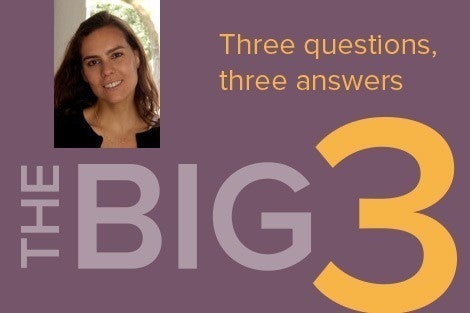November 14, 2014 — Mariana Arcaya is a Yerby Fellow at Harvard School of Public Health whose work focuses on the intersection of urban planning and public health. She was lead author of two recent papers that tracked the health of a group of Hurricane Katrina survivors in the years following the storm.
Q: Why did you focus on Hurricane Katrina survivors?
A: This population was special because they survived a disaster that forced a lot of them to move when they otherwise probably wouldn’t have. We know that lower-income people and racial and ethnic minorities tend to be in worse health, and that they also tend to live in lower-income neighborhoods. There’s a whole field of research around how poor neighborhoods harm your health. This study looks at the flipside: To what extent is poor health leading people into poor neighborhoods?
The people in the group we studied all lived in a condensed area of New Orleans before Hurricane Katrina. They were predominately African American mothers under 200% of the poverty line who had started community college.
When the hurricane hit, most of them were forced out. What we were able to do was look over the next several years to see what kinds of neighborhoods they ended up in. What we found was that the people who started the study with worse health ended up living in poorer neighborhoods five years after the storm compared with other people in the study.
Q: How do you account for that?
While we didn’t have the data to examine that question specifically, we have some hypotheses. I think there’s a chance that people who have health problems are going to be spending more of their money on managing that issue or they’re going to have less money because of that issue. They may have to miss work or have a history of needing to leave jobs to deal with health issues. That lack of financial resources could constrain where they can choose to live.
Another explanation is mental bandwidth. People dealing with health conditions might just have less energy and capacity to seek out other neighborhoods.
Risk tolerance may also be a factor. Sometimes, even if a person with a health issue does have the money to move into a slightly more affluent neighborhood, he or she might worry about future increases in expenses related to a health condition.
We don’t know the answer yet, but we think it could be a promising avenue for future research if we can find the right data set.
Q: What else have you learned about health from studying this population?
A: We’ve been able to use this population to look at how relocating to areas that are characterized by urban sprawl affects weight. Those are the types of neighborhoods where it’s really hard to walk because the streets aren’t connected well, for example with strip malls and cul-de-sacs. We found that urban sprawl is a risk factor for weight gain.
We’ve also looked at data from this population to try to understand how post-traumatic stress disorder is related to physical health problems like asthma. We’re working on another analysis of how PTSD is associated with migraines and headaches.
Role of health in predicting moves to poor neighborhoods among Hurricane Katrina survivors (PNAS)
Urban sprawl and body mass index among displaced Hurricane Katrina survivors (Preventive Medicine)
